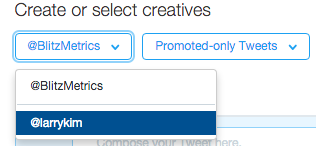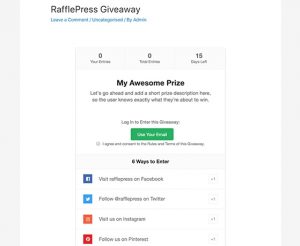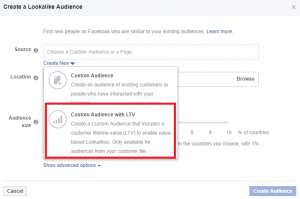You’re probably aware that Twitter is often overlooked, especially in comparison to Facebook’s advertising capabilities.
But here’s something you might not know: You can promote someone else’s tweet.
All of your positive mentions and implied endorsements from others on Twitter can be retargeted to relevant audiences on Twitter.
Think about the opportunities this allows- the ability to amplify what others are saying about you, putting positive endorsements in front of whoever you’d like. Definite jet fuel for your personal brand.
Here’s how to take advantage of this little-known feature.
1: Get permission from the tweet’s author.
Before heading over to Twitter, figure out whose tweets you want to promote and get permission from them. This is the main reason this technique is not as widespread as it could be.
To promote someone else’s tweet, you need their written permission to show to your account manager at Twitter. If you don’t already have an account manager, you’ll need to start advertising on Twitter until you reach their spend requirements.
In this case, I want to promote one of Larry Kim’s tweets:


2. Define your promotion objectives.
Think about the different objectives in promoting a tweet:
- To gear up for a conference (what we’re doing in this example)
- To amplify someone’s good experience with your brand
- To reap the rewards of a high-profile endorsement
- The list goes on…
I want to promote Larry Kim’s tweet in preparation for Pubcon:

3: Begin setting up the campaign via your Twitter Ads account
To promote a tweet, head on over to your Twitter Ads account, found in the upper-right drop-down menu.
Click on “Create new campaign” and then “Tweet engagements” for the objective.

4: Name your campaign and set your start and end dates
Give the new campaign a name and set some start and end dates (or run it continuously if you have an evergreen piece that you want consistently promoted to new people).

5: Refine your targeting to reach the most influential audience
Here’s where you can really refine targeting. Start with the location (in this case, United States). Next, if you want to target a specific gender, language, device, platform, or carrier, you can do so here.

You’ll want to continue to narrow down your target. Scroll down to the “Additional Audience Features” and take a look at the options here.
For this example, I want to target the followers of some specific profiles, so I’ll choose the “Add followers” option. If you want to target multiple usernames, like I do, click the “Import multiple @usernames” button.

Throw in however many username’s followers you want to target and click “Verify @usernames” to make sure you typed them in correctly.

If everything looks good, go ahead and click “Add users”.

6: Set up your campaign budget
Let’s set up a budget now. This example is utilizing the “Dollar a Day” method here to reach a targeted, relevant audience inexpensively.
Set a higher daily budget if you have something you want more people to see, or if you notice that your campaign is doing well in one of your check-ins.

7: Select the tweet that you would like to promote
Now select the tweet you want to promote. If you gained permission properly at the beginning, you should see the Twitter handle here in the dropdown menu. Click on it, and you’ll see a list of all their tweets in the field below.

Select the tweet you want and play with the sidebar that shows you how your ad will look on different platforms. Here’s what ours looks like on an iPhone:

Once you’re happy with everything, scroll back up to the top and click the blue “Launch” button.

You’ve successfully promoted someone else’s tweet.
Conclusion
This technique grants you a great deal of power and access, so use it wisely and respectfully.
With permission, you’re able to promote and compose tweets on behalf of any handle. Because of this, you must have a solid relationship with these users before you are able to use this feature. Don’t just ask for or give permission yourself without first understanding this.
Since I used our “Dollar a Day” method here, The campaign gained almost 4,000 relevant impressions with a 2.21% engagement rate. That comes out to just over a $ 0.30 CPE and a total cost of about $ 25.

The key point to remember is that all of those impressions were relevant ones. They saw the ad because they followed the accounts that I targeted, which means they care about the same things I do.
Targeting relevant users provides cheap, meaningful impressions and engagements. It changes a user’s opinion from an “annoying ad” to something they’re happy to see.
You can use this technique across a wide variety of industries, with the proper access, of course. Take a music festival, for example:
Music festivals, much like professional conferences, have two categories of attendees: performers and audience members.
The performers will naturally begin to promote your festival for you on their social media channels because they want their fanbase to attend and support them. The more fans they bring to the festival, the better they look, and the more new fans they’ll attract.
Use this to your advantage.
Because you’re in a position of authority, most bands won’t have any issues granting you access to promote their tweets. It’s free promotion for them, and everyone benefits.
You can take a tweet from one of the bands and promote it to people that are similar to their followers, people interested in music festivals, people that tweeted specific keywords (band names, lyrics, etc.), or any of the various targeting features Twitter offers.
Apply this technique across the lineup of bands and you will increase your reach to relevant audiences exponentially.
Replace “band” in the above example with “presenter” and you’ll see how this applies if you’re a conference organizer wanting to boost your attendance.
This can even be used to further your personal brand by amplifying the positive mentions you receive from other thought leaders, as Larry Kim, Founder and CTO of Wordstream, points out:
 “Generally, it’s better to have someone else say something nice about you rather than saying it yourself (since obviously, your own opinion about yourself is biased and comes across as rather self promotional). So I think this new feature is a rather Interesting loophole that lets you get around that whole bias and self promotion issue.”
“Generally, it’s better to have someone else say something nice about you rather than saying it yourself (since obviously, your own opinion about yourself is biased and comes across as rather self promotional). So I think this new feature is a rather Interesting loophole that lets you get around that whole bias and self promotion issue.”
Have you used this feature before? What have you used it for?
Digital & Social Articles on Business 2 Community
(68)





